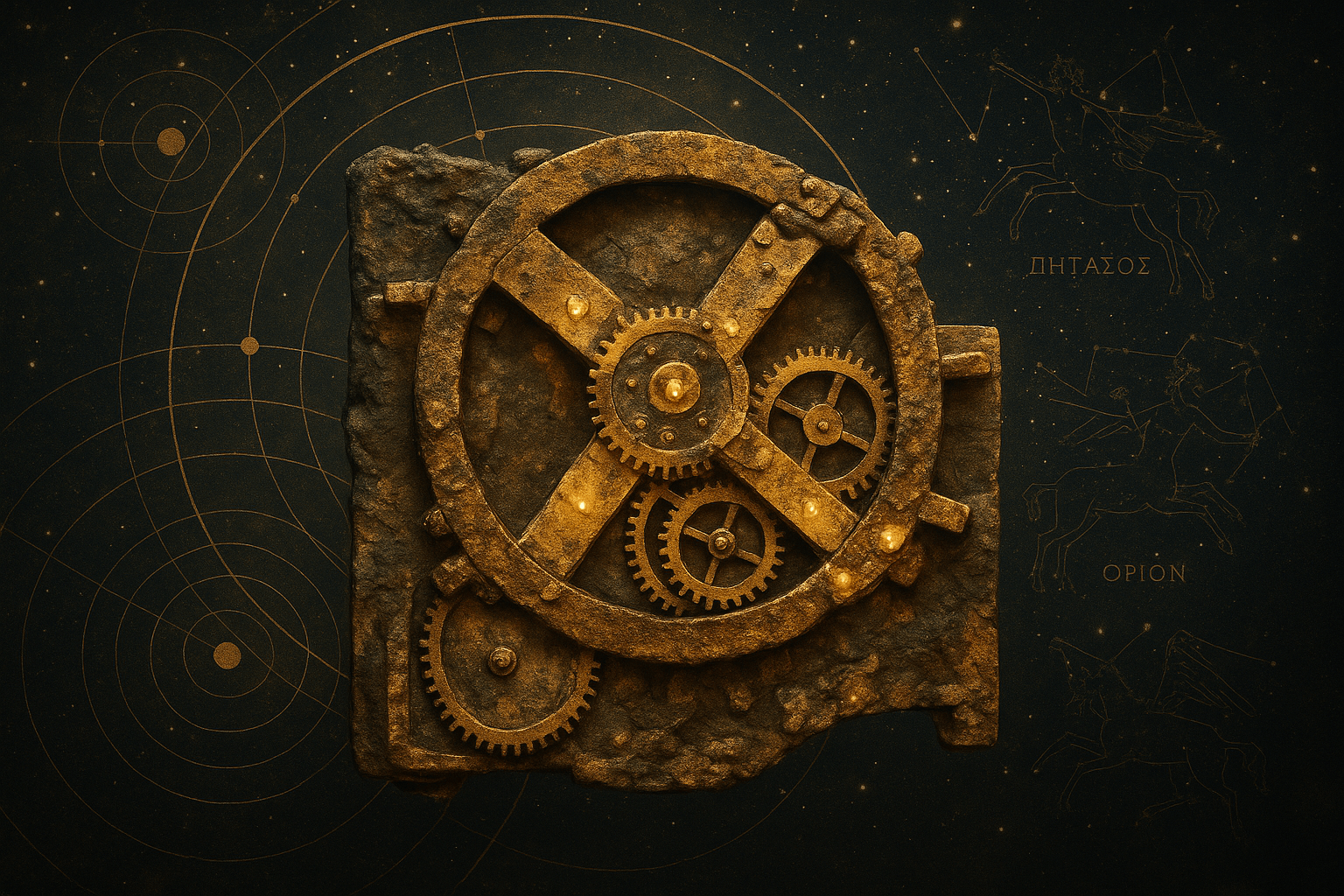A Puzzle Box from the Depths
Initially, the artifact looked like a rock. But as it dried, it cracked open, revealing a glimpse of something extraordinary: the faint outline of gear wheels. Early observers were baffled. Complex gear trains like this were not thought to have existed until the magnificent astronomical clocks of 14th-century Europe, more than 1,400 years after this ship sank. The consensus was that it must be a later, intrusive object that had somehow become fused with the ancient wreckage.
It wasn’t until the 1950s that the mystery began to unravel. Historian of science Derek de Solla Price dedicated years to studying the fragments. Using primitive X-ray technology, he painstakingly charted the interlocking gears within. In a landmark 1974 paper, he proposed a breathtaking theory: the device was a complex mechanical calculator designed to model the motions of the cosmos. His claim was so bold, so far outside the accepted view of ancient capabilities, that many in the academic community remained skeptical.
High-Tech Peels Back the Layers of Time
The true genius of the Antikythera Mechanism was only fully revealed in the 21st century. Beginning in 2005, the Antikythera Mechanism Research Project brought cutting-edge technology to bear on the fragile fragments. Using high-resolution surface imaging and advanced computer X-ray tomography, scientists were able to see through the layers of corrosion and digitally reconstruct the device in its entirety.
What they found was a symphony of gears. Housed in a wooden case with bronze front and back plates, the mechanism contained at least 30 precisely machined bronze gears. A user would turn a knob or handle on its side, setting in motion a complex train of gears that drove a series of pointers on the front and back dials. The inscriptions on the device, now legible for the first time, acted as a user manual, explaining the astronomical phenomena being displayed.
A Clockwork of the Cosmos
The mechanism wasn’t a simple clock for telling time, but a sophisticated compendium of astronomical knowledge. Its functions were staggering, encoding the pinnacle of Greek astronomical theory into a physical, predictive model.
- Solar and Lunar Tracking: The main front dial featured two pointers, one for the Sun and one for the Moon, showing their positions against the backdrop of the zodiac.
- Lunar Phase Display: A beautiful feature, a small silvered ball within the Moon pointer, rotated to display the current phase of the moon—new, waxing, full, and waning.
- Eclipse Prediction: The back dials were perhaps the most brilliant part. One spiral dial laid out the 223-month Saros cycle, a period the Babylonians discovered could be used to predict both solar and lunar eclipses with remarkable accuracy.
- Modeling Irregular Orbits: The ancient Greeks knew the Moon’s orbit wasn’t perfectly circular; it appears to speed up and slow down. The mechanism’s creator ingeniously modeled this anomaly using a “pin-and-slot” system, where one gear drove another through a pin moving within a slot, causing the driven gear to accelerate and decelerate. This was an early form of a differential gear, a component that would be reinvented over a millennium later.
- A Cultural Calendar: It wasn’t just about the sky. Another dial, the “Games” dial, indicated the timing of the four major Panhellenic Games, including the Olympic Games, showing its use as a social and cultural timekeeper.
A Glimpse of Lost Genius
The Antikythera Mechanism, dated to around 150-100 BCE, fundamentally changes our perception of the ancient world. We have long admired the Greeks for their philosophy, democracy, and architecture, but this device reveals a level of mechanical engineering prowess that was thought impossible for the era. It’s as if someone discovered a perfectly functional laptop among the ruins of the Roman Colosseum.
It demonstrates that ancient engineers possessed not only the theoretical astronomical knowledge but also the metallurgical and mechanical skills to create incredibly complex, miniaturized devices. The gear teeth are cut with a precision that would be respectable even by modern standards.
So why have no other devices like it been found? The answer most likely lies in the material. Bronze was a valuable metal, and as empires fell and technologies were forgotten, complex devices were almost certainly melted down for their raw materials to make swords or coinage. The Antikythera Mechanism survived only through the sheer luck of being lost in a shipwreck, hidden from the world for two millennia.
While its creator is unknown, the device is often associated with the island of Rhodes, a hub of Hellenistic astronomy and engineering, and with astronomers like Hipparchus, who was working on theories of lunar motion at the time the mechanism was likely built. Some have even traced its intellectual lineage back to the legendary inventor Archimedes of Syracuse.
The Legacy of a Sunken Computer
The Antikythera Mechanism is more than just an ancient artifact; it is a profound message from our past. It proves that our ancestors were capable of a technological sophistication that was subsequently lost and not rediscovered for over a thousand years. It is a humbling reminder that history is not a simple, linear progression of progress. Sometimes, knowledge can be lost to the depths, waiting for a chance discovery to surface again. This single, corroded lump of bronze stands as a silent testament to a forgotten age of genius and the enduring mysteries that still lie buried beneath the waves.
